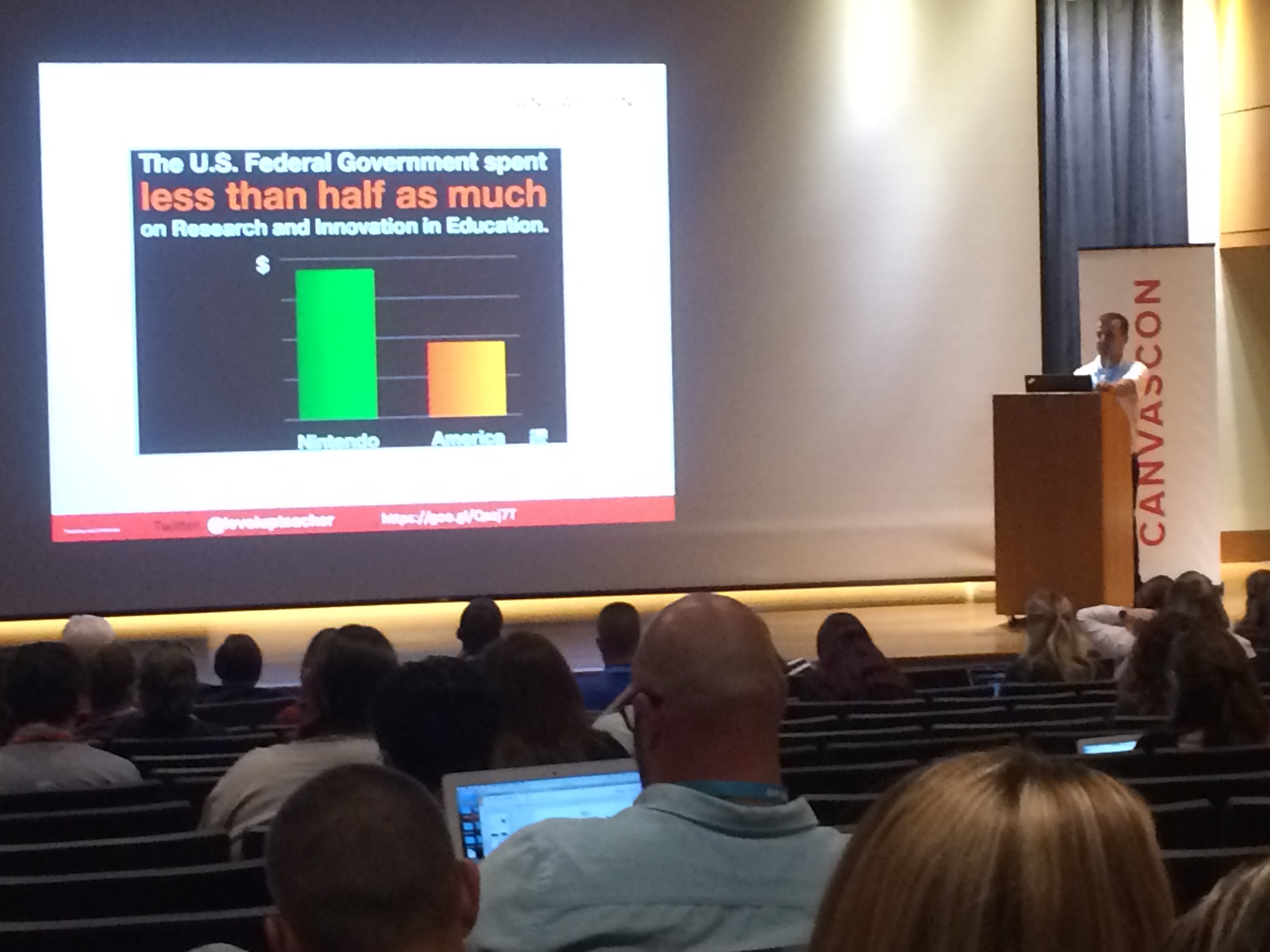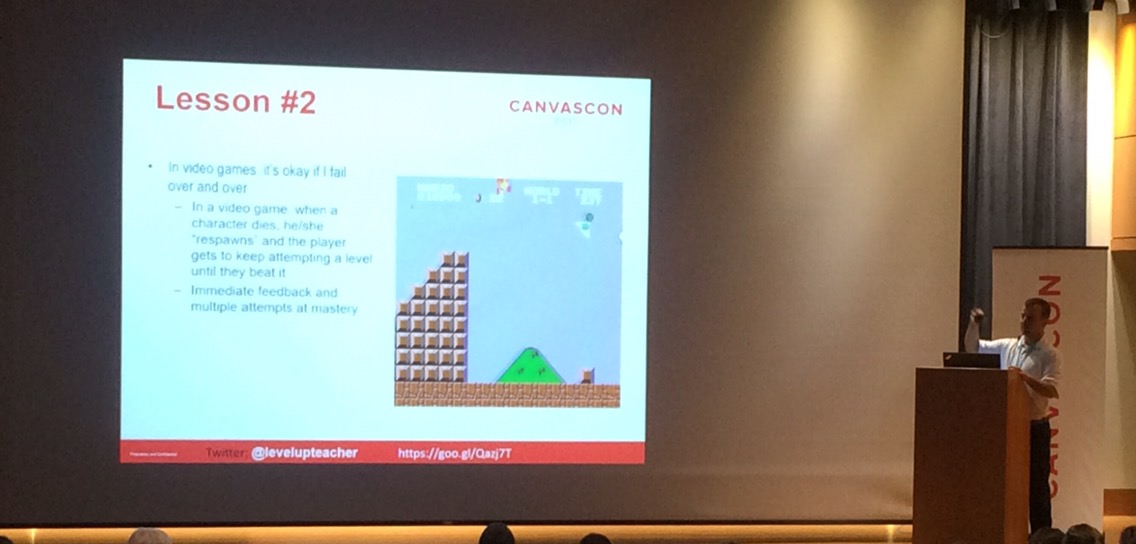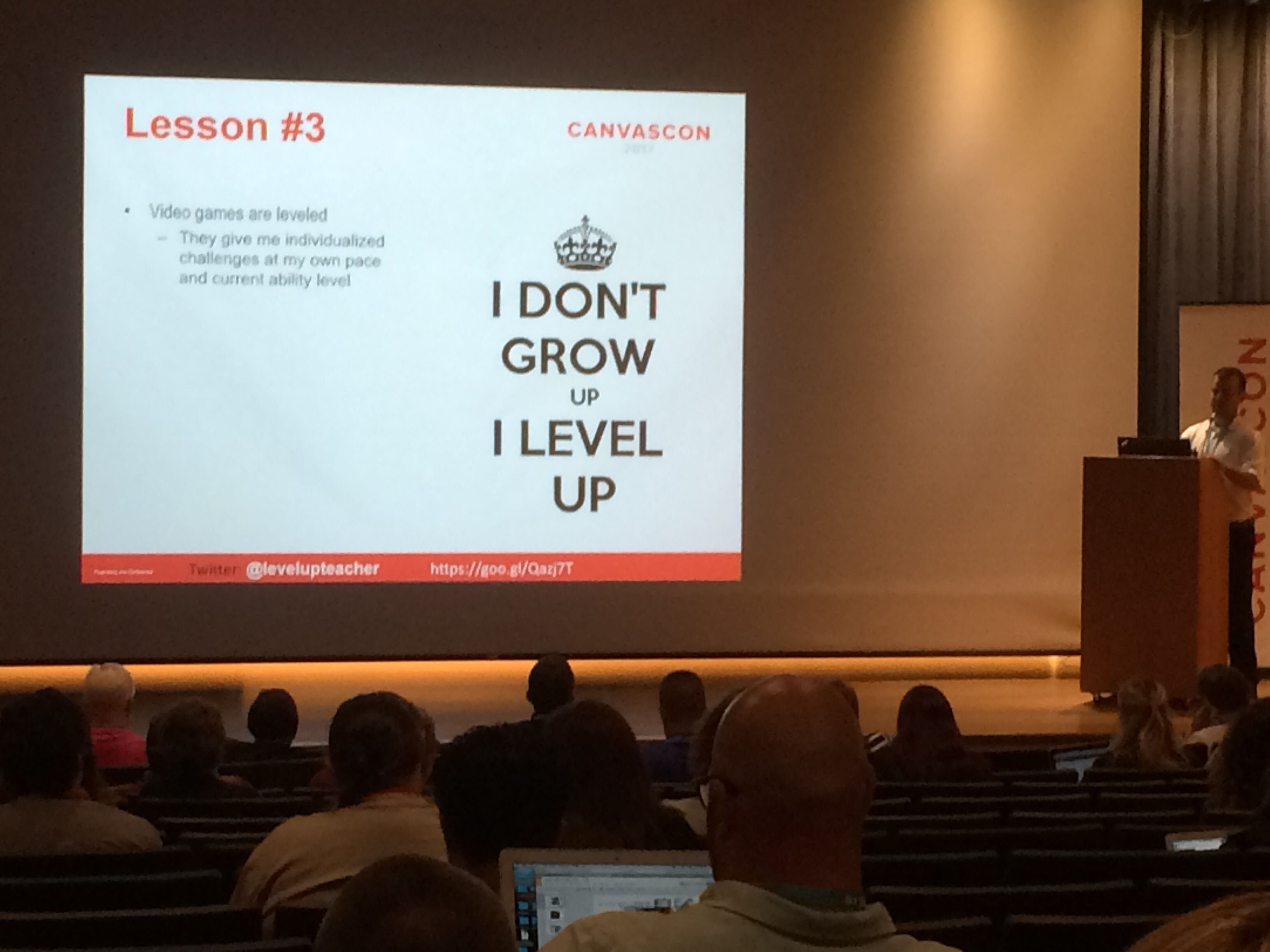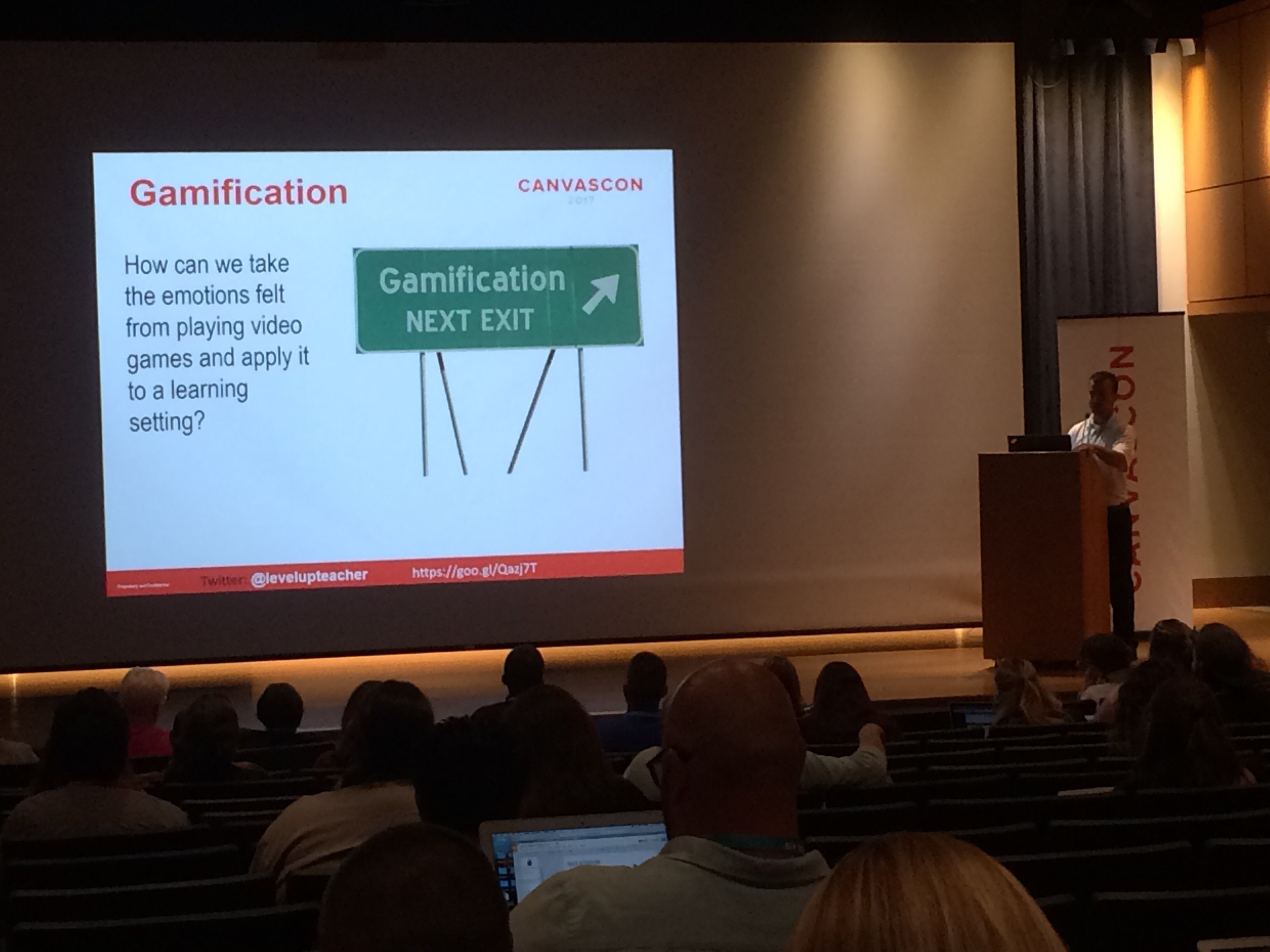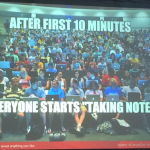A statistic about how much money Nintendo spends on Research and Development, vs. how much the U.S. Department of Education spends, was as eye-opening for the audience as it had been for Brenner.
Another key element that is also important to me, and a motivation to gamify, is the ability of repeated failure to lead to learning. (There is a good acronym later in this post related to this point.) On the one hand, the ability to fail and “respawn” in a course – other than simply repeating the course next semester for credit – frees students to make progress that they would not otherwise. Indeed, in another session at CanvasCon it was shared that repeated microassessments without the fear of failure leading to a low grade are the most effective means of making progress in learning. The question I continue to wrestle with is how we give students that freedom to fail, and yet still evaluate progress in a way that means their diploma vouchsafes progress and competencies.
Another great point highlighted the facial expressions gamers make when playing video games, and asked how often our students make similar faces, because they are having similarly fun, exhilarating, challenging, and rewarding experiences.
That experience may be described in terms of an “epic win.”
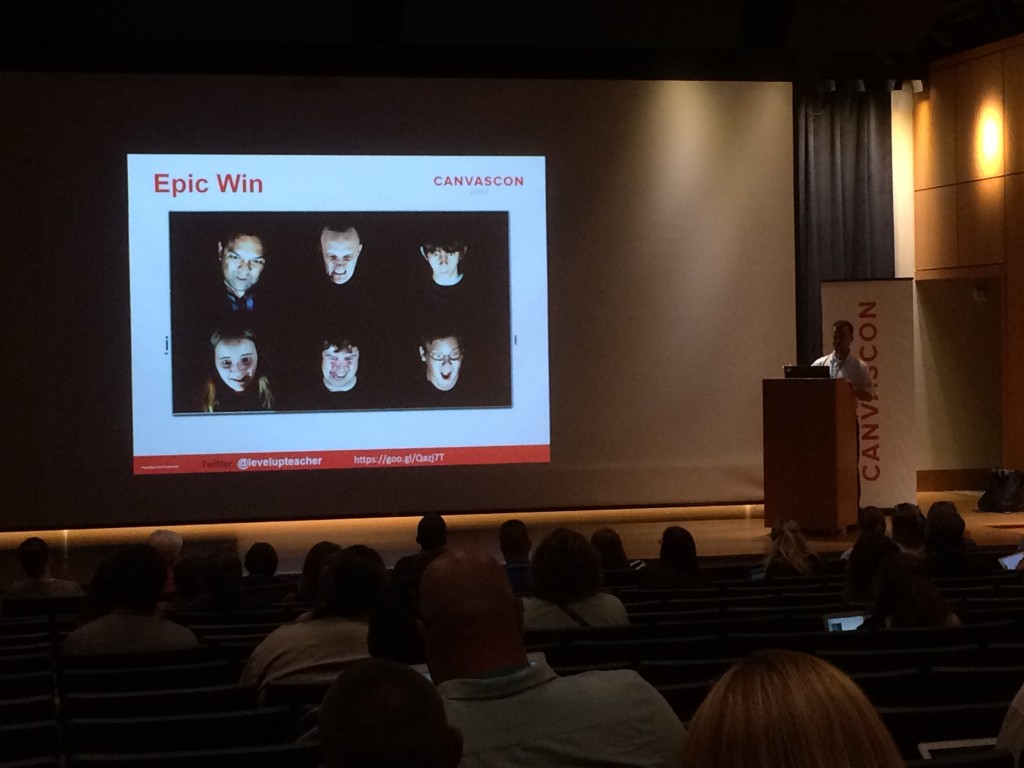
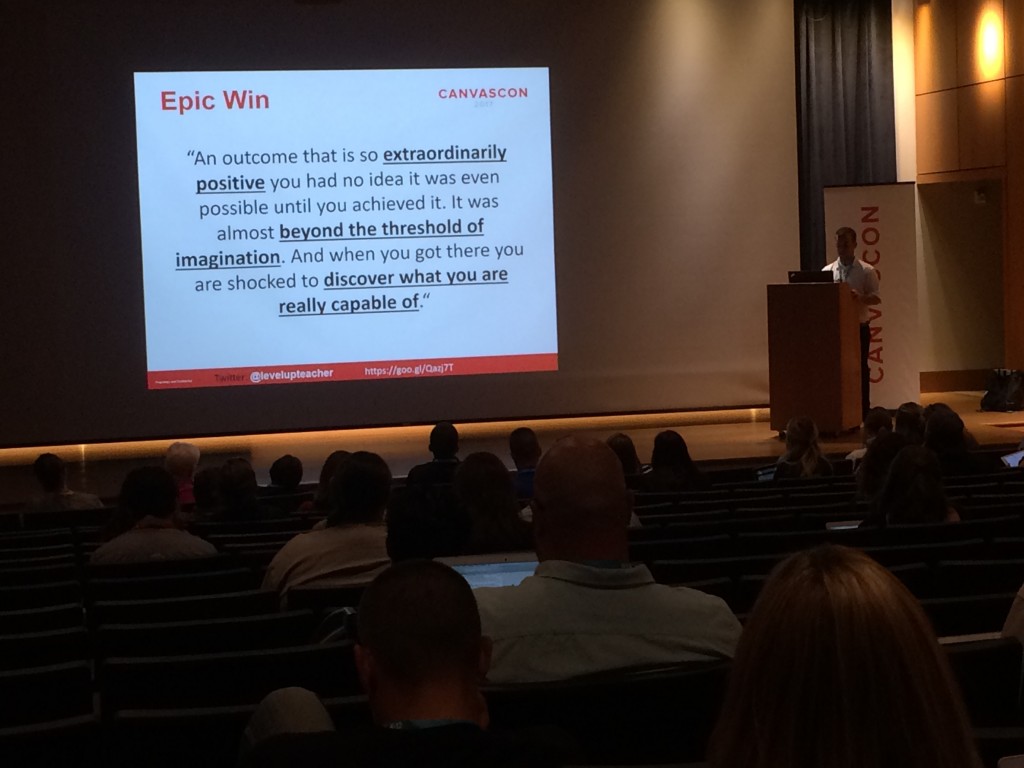
On the next page you’ll find a few other photos from the presentation, followed by that FAIL acronym I mentioned earlier, which I am sure you will appreciate, since it redefines the meaning of failure in a powerful way that is true to what we learn about it at the intersection of gaming and education…


